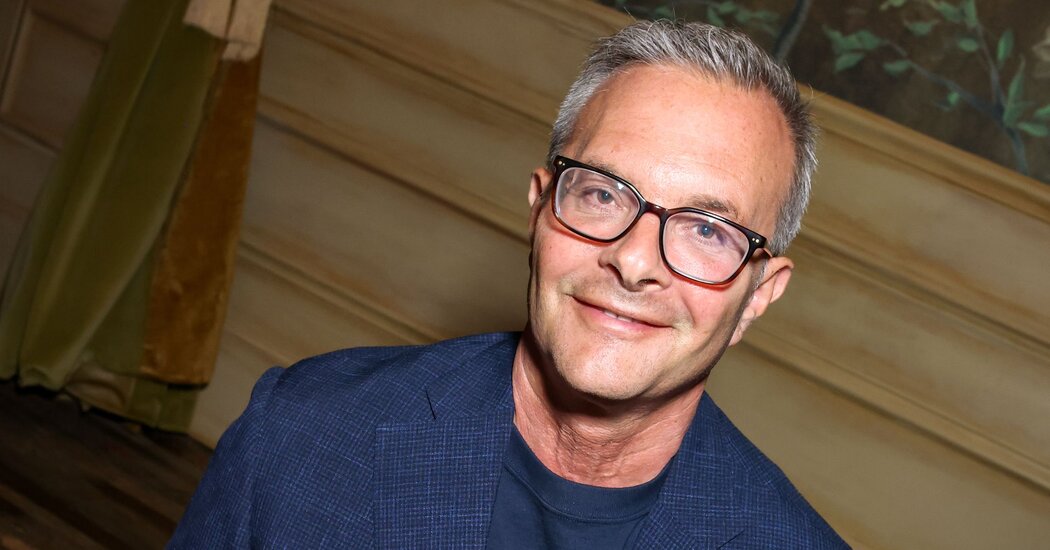
Over his three decades at the top of the industry, Ivan Bart helped engineer the careers of such top models as Gisele Bündchen, Kate Upton and Kate Moss.
Not without reason has modeling been termed the ugly business of being beautiful. Opaque, barely regulated and often cutthroat, it is seldom viewed as an incubator of big-hearted altruists. Yet when news came this week that Ivan Bart, the former president of IMG models, died suddenly at age 60 — following what was described as a brief illness — social media lit up with outpourings of praise for a man that Fern Mallis, a seasoned industry consultant and the author of “Fashion Lives: Fashion Icons with Fern Mallis,” called “one of the most delicious human beings you ever want to know.”
It was hardly lost on anyone that Mr. Bart had been a rare progressive voice in an industry that for decades lagged behind broader societal advancements. Instrumental over his 30-year career in finding and then shaping the careers of some of the most stellar names in the business — among them, Gisele Bündchen, Liya Kebede, Carolyn Murphy, Gigi Hadid, Stephanie Seymour, Tyra Banks, Kate Upton and Joan Smalls — he was also an early champion of diversity and inclusion and a canny marketer with a gift for anticipating shifts in the overall cultural mood.
When Mr. Bart went to IMG after a previous job heading Ford Models, “people still thought of models as having a use-by date,” said James Scully, a retired casting agent and himself a noted star-maker. “It was, ‘You had your moment, and now there’s a new car in town.’”
Mr. Bart, by contrast, took a long view of the talents he helped foster and had a singular ability to recalibrate a model’s trajectory, often more than once over the course of their career.
“Candice Swanepoel was at the wrong end of the business, a swimwear girl,” Mr. Scully said, referring to the South African supermodel, tabloid favorite and social media star. “Ivan revamped her image, and she ended up doing editorial for every major magazine and designer label. He salvaged Joan Smalls from being a midlevel Macy’s catalog queen everyone had written off, and then look what happened.’”
Under Mr. Bart’s tutelage, Ms. Smalls, a native of Puerto Rico, became both a top-ranked high fashion model and the first Latina to sign a coveted Estée Lauder cosmetics deal. Now well into her 30s, she continues to score major campaigns and, not coincidentally, has over six million followers on Instagram.
“Ivan could go with the times,” Mr. Scully said. “He saw the curve girls coming, he saw social media coming, he saw what Gigi and Bella Hadid could become.”
He was also, as the magazine WWD pointed out, an outspoken voice in favor of broadening beauty standards to include those of all sizes, ages, races, physical ability and gender. “In order to be effective in the business, you have to be aligned with the culture,’” said Kyle Hagler, a former IMG executive who now heads No Smoking, an independent modeling and talent agency. “Ivan celebrated diversity, but he was also smart about it.”
That is, Mr. Hagler continued, Mr. Bart could afford to take fliers on talents like Maye Musk, Elon Musk’s mother, now in her 70s or the plus-size model Paloma Elsesser or the transgender model and actress Hari Nef, in part, because IMG’s earnings were bolstered by scores of successful models more closely aligned with conventional beauty stereotypes. “He understood that this business has a way of discarding the thing that it currently celebrates, and you have to plan for that,” Mr. Hagler said.
Yet it was not merely the bottom line that fueled his passion for the business and the talents it relies on, according to those who knew him. “I think what stood out is his humanity in a business that doesn’t show too much humanity,” said the designer Stan Herman, a former president of the Council of Fashion Designers of America and, at 95, fashion’s elder statesman. Mr. Herman’s view was echoed by that of Steven Kolb, the current head of the CFDA.
“Success is driven by money, but Ivan was that voice you need — a noncorporate guy in a corporate environment,” Mr. Kolb said. “Most people looking at a Gigi or a Bella or a Paloma or any of those girls see a pretty face.” Mr. Bart, on the other hand, who was actively involved with CFDA’s health, safety and diversity initiative from its inception, thought of models as “something more than a commodity,” Mr. Kolb said.
“He fought for things like diet and nutrition, privacy backstage, how models are paid, how their hours are clocked. People overuse the word family in the corporate world, but he did see the models as family.”
Overwhelmingly, it seemed, his industry concurred. As news of his death spread this week, Instagram was flooded with expressions of grief and broken heart emojis posted by top models like Ashley Graham, Shalom Harlow and Anouck Lepère; photographers including Mario Sorrenti, Vinoodh Matadin, Inez van Lamsweerde and Alex von Bismarck; and the designer Marc Jacobs.
For almost all of the model Guinevere van Seenus’s decades-long career — one that saw her stark, angular beauty featured on no fewer than 12 Vogue covers, in campaigns for labels like Prada and the Gap and captured by the lenses of seemingly every noted fashion photographer — she worked under Mr. Bart’s professional aegis.
“Ivan wrote different rules,” Ms. van Seenus said on Thursday. “Every situation was looked at. Every job was discussed. He was not afraid of the clients. He was there to take care of us.’’
